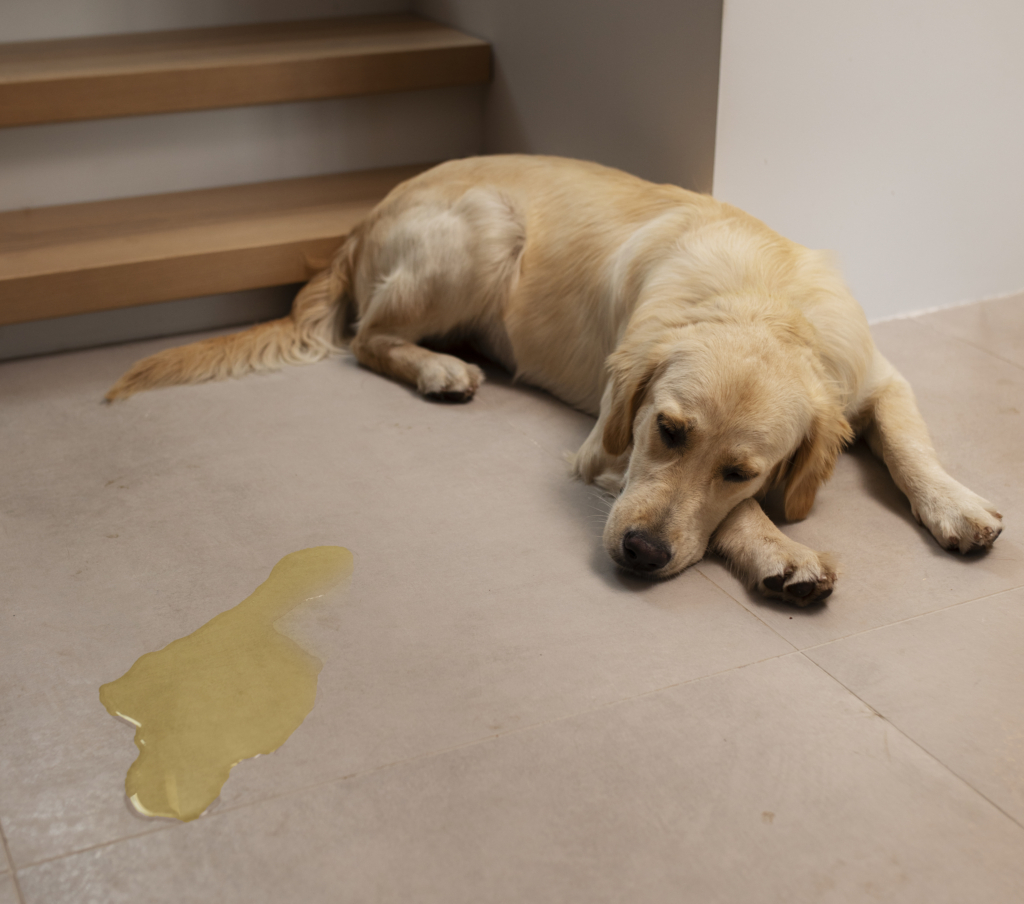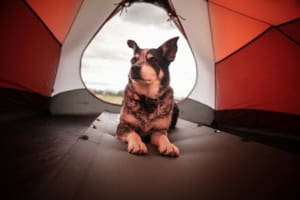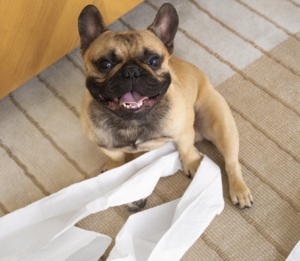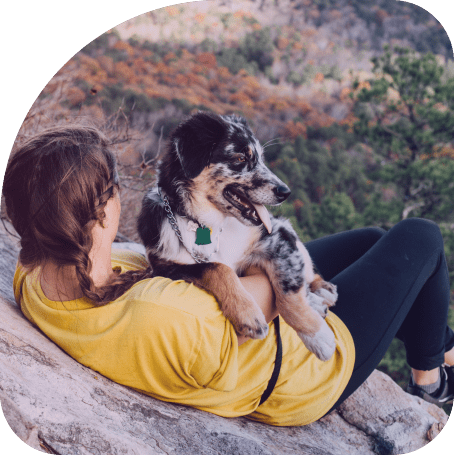Welcome back to our series on house training! If you’re here, you’ve probably read our first blog that explains:
- How to understand when your puppy needs to go to the bathroom
- How to housetrain your dog
- Crate training and how to use it for house training
In this blog, we will cover the important topics of:
- Prevention methods for housetraining
- What to do or what not to do when your dog has an accident
- What to do at night
- Adding a cue so your dog goes when you ask them to
Remember, it will ultimately depend on how consistent and on the ball you are, as well as your dog’s breed, age, size, history, emotional state, medical state, and also, what their experience was going to the bathroom before you got them.
Prevention and management strategies
Management inside the house is very important. Keep in mind that accidents may still happen as your pup starts to learn, however, with prevention and management strategies in place, it will help set everyone up for success and really start limiting those accidents.
First, let’s roll up those carpets. Puppies will often relate carpets and rugs to a similar texture to grass and are more likely to relieve themselves there. Store your rugs somewhere until your pup is fully housetrained to avoid the temptation to soil on them, or chew them for that matter. You want to create spaces that are setting your dog up for success. If you have rooms that are completely carpeted and you can’t roll them up, try to avoid having your pup in those rooms by putting up baby gates or closing doors. Additionally, using baby gates and closing doors to the areas you don’t want your dog wandering into where they won’t be supervised is not only helpful but critical, for expedited house training and safety.
Your puppy’s food and water should be kept out of reach while unsupervised, so you can monitor when they are consuming. When they do have a drink and/or a meal, take them outside soon after. As mentioned in the sample house training schedule above, a schedule that includes water and food breaks will keep potty breaks more reliable and predictable.
Some puppies have a hard time holding their bladder when they are nervous or excited. This means that if people are coming over to the house, it is best to greet them outside first in case they let out an excited pee, alternatively, make sure anyone coming into your home initially ignores your dog completely and only greets your dog once they are calm.
Some places that your dog CAN be while housetraining when UNsupervised are in their crate (once crate-trained) or in a smaller area of the house (such as a hallway or kitchen) closed off by an x-pen or baby gates. In these areas, calm activities such as lick mats, kongs, chew toys, and snuffle mats can be used to occupy them, and some old blankets on the ground can encourage rest (we don’t recommend dog beds quite yet as often your pup will just chew them up or pee on them). Your puppy should be sleeping up to 18 hours within a 24-hour period so you want to make sure they have a quiet space for all this very necessary rest. A crate is a great place for your puppy to sleep but they need to be properly trained to enjoy spending time in their crate, so it’s important to check out our crate training series if that’s not the case for them.
What to do and what NOT to do when your dog has an accident
If your puppy goes to the bathroom in your house or another indoor place, we simply clean up the mess and move on. Scolding your puppy or doing anything punitive to them for doing their business indoors will make matters worse. Dogs that are punished for soiling indoors tend to progress slower in the end. The reason why punishing them makes things worse is that if they get in trouble, they will know you are upset, and will likely feel fear or anxiety. This will make them think that you don’t like it when they go to the bathroom in general. This translates to them often feeling fearful or anxious about having to go to the bathroom, so the next time they have to go, they’ll likely go into another room or behind the furniture where you can’t see them to avoid upsetting you. This is when you find puddles or piles of poop where you least expect them. The old-school method of shoving their nose in it is proven to not work. Yes, your dog will know they’re in trouble, but your dog will now probably fear you, pee behind the furniture, and run away from you or cower when you get close to them.
Ultimately we have to take the blame if they keep going inside. It means we didn’t stick to our schedule, we missed a signal, we weren’t quick enough to get them outside or our management was slipping. Your puppy had to go, so it did. Would you punish a baby for peeing when it had to pee? They either do not have enough bladder control yet to hold it or they simply have not shaken their old habits yet. Stay calm and just clean it up. Next time try to be more aware of the signals your puppy is giving you, supervise closely, set an alarm to get ahead of their internal schedule, and work on your crate training daily.
Be sure to use a bio-enzymatic cleaner while cleaning up after your dog inside. This will fully eliminate any bacteria left by urine or feces. If you use a regular house cleaning product, there is a high chance your puppy will try to go to the same spot again as they will still be able to smell the remnants of their mess, even if you can’t. Remember their sense of smell is thousands of times better than ours, and if it smells like the bathroom to them, then it must be a bathroom! Limit access to that spot if possible, just in case you missed some of the festering bacteria.
If you happen to catch your puppy as they squat, try to pick them up quickly and run them outside to their regular potty spot. This shows them you’d prefer if they went pee or poop there instead of inside of the house. Accidents happen and we can’t put too much pressure on ourselves or our pup. Some dogs take longer than others to figure out housetraining and that’s okay, just stay consistent and on top of their schedule and management. If you are frustrated, try slowing down, going back to the basics of following a strict schedule, and taking them out in shorter intervals.
What to do at night
At night our puppies don’t need to be let out as frequently as in the daytime. The first couple of months may include a few night-time bathroom breaks, and this is completely normal. An indication of your puppy needing to go out at night might be crying, scratching at their crate or pen, or barking. Keep their crate or sleeping area within earshot of where you are sleeping, so they can alert you when they need to go. You can even set an alarm for every 3-4 hours if you want to be proactive and avoid the whining or barking. We recommend using a crate at night, as they won’t want to pee where they are sleeping. They’ll then likely wake you up if they have to go to the bathroom, as opposed to wandering off to pee somewhere in the house.
When you take your puppy out for a nighttime bathroom break, remember to keep them leashed, pick a regular spot to take them, and head right back inside afterward so they don’t try to play while you are out there. And of course, do not forget to reward your puppy for going outside, even at night!
Once awake in the morning make sure to take them straight outside. You can even pick them up and carry them out if you are worried about an accident on the way. No stopping to check your phone, or emails, or grab a coffee. Head straight outside to avoid any accidents!
Adding a cue
A verbal cue can be helpful during potty training, just like any other type of training. Encouraging our pups to go to the bathroom when we ask can be useful on road trips, at a friend’s place, if you’re in a time crunch or if you can cut down the time you have to stand outside in the rain. Your cue can be “go pee”, “go potty”, “do your business” or anything you prefer, as long as it is consistent and used properly. Make sure everyone who will be taking your pup to the bathroom uses the same words and is on board with the housetraining plan.
Every time your puppy goes to the bathroom outside, you want to use your cue word while they are relieving themselves. Then after they finish, praise them and reward them with a treat. Do this every time for a few weeks. After a couple of weeks, you can start saying your cue word before they squat, if you have done enough repetitions of your cue word, they should start searching for a place to go as soon as you say the word. If they don’t respond, then you need more repetitions of saying it while they are going. The end goal of using a cue word is that when you say it, your dog knows it’s time to do their business.
Remember, you can always come back to this blog for help!
Check out our next blog post for the final part of our housetraining series, where we will go into detail about:
- Regression periods
- Dogs that mark indoors
- Surfaces and different potty area options
- And some other common house training challenges



